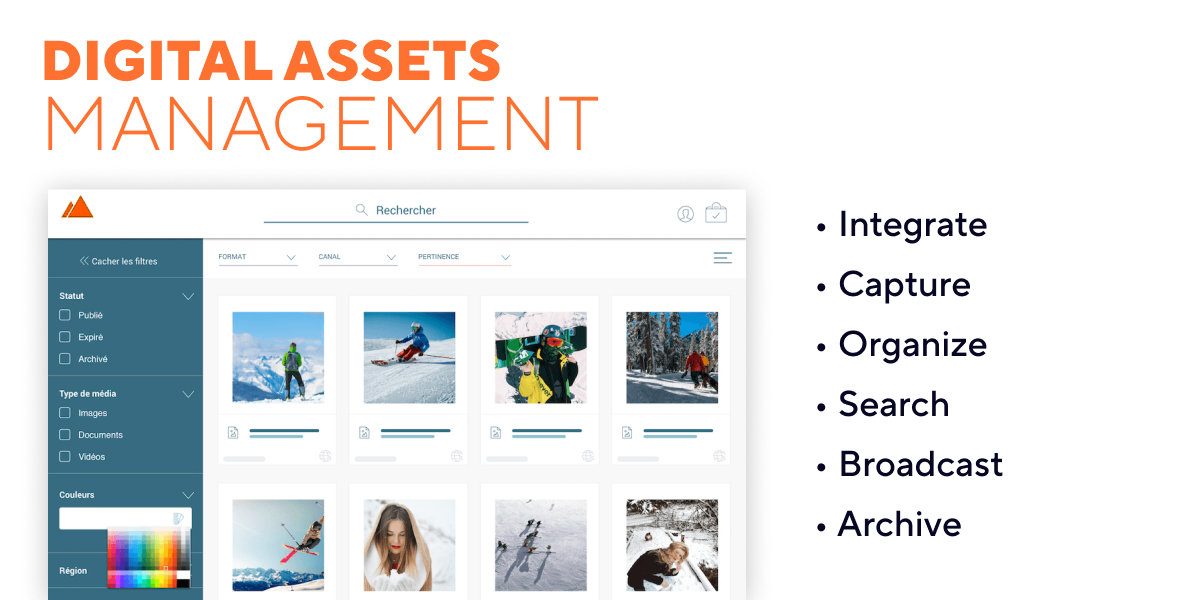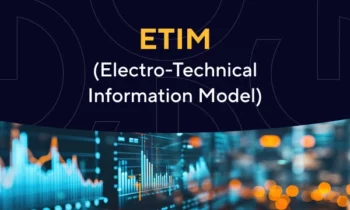Digital Asset Management (DAM): A key link in the content value chain

In an era of ubiquitous digitalization, it’s evident that digital tools greatly enhance a company’s performance. However, managing all enterprise data is often a complex challenge.
Take graphic assets as an example: the creation of multiple versions of the same asset across a company’s storage spaces or simply the loss of data can become recurring issues. This happens mainly due to versioning errors or disorganized storage practices. As a result, implementing a marketing data management tool is essential to streamline content production. This is where Master Data Management (MDM) comes in, with two major components: Product Information Management (PIM) for product information and Digital Asset Management (DAM) for visual assets.
Effectively storing thousands of digital resources is no easy task. It requires a structured approach to avoid chaos in data organization. DAM solutions provide users with intuitive tools to classify, store, and search for content efficiently. These features are embedded in MDM, DAM, and PIM systems, ensuring seamless management and optimization of marketing and communication data.

What is DAM?
DAM stands for Digital Asset Management. It is a technology solution that allows businesses to store, organize, and share digital assets. By offering an innovative and intuitive interface, DAM acts as a secure and centralized repository for digital content. It simplifies the internal sharing of digital assets such as images, text documents, and videos across teams.
DAM goes beyond simple storage by providing a collaborative platform that enhances productivity across departments, from marketing to sales, IT, and creative teams (design, brand management, etc.). It’s a versatile solution for both B2B and B2C companies.
For instance, with a DAM solution, users worldwide can easily access and download approved assets. This significantly accelerates communication workflows, enabling companies to publish content on websites or social media in a matter of minutes.
Why implement a DAM solution?
Today, DAM plays a vital role in the content value chain, which can be broken down as follows:
Production → Storage & Organization → Localization & Personalization → Distribution
DAM solutions cover all these steps, from storing and structuring content to managing localization and distribution. As marketing content volume and diversity increase, it’s crucial for businesses to centralize content and establish a single source of truth for all digital assets.
By centralizing content, DAM solutions not only strengthen a company’s brand identity but also ensure consistency and relevance throughout the content lifecycle.
Moreover, DAM systems facilitate digital transformation by supporting multichannel strategies and integrating with marketing production platforms. They optimize resources and reduce the need for costly investments by enabling personalized and targeted campaigns with greater precision. This approach enhances interdepartmental communication and boosts overall productivity.
DAM & PIM: A crucial partnership
PIM (Product Information Management) is another essential technology that centralizes and harmonizes product marketing and technical information. While DAM manages digital files, PIM handles product data. Both systems are complementary and essential for digitalizing product offerings.
Although DAM and PIM have distinct roles, they should be integrated to ensure optimal communication between marketing, creative, and sales teams. Together, they form part of a broader Master Data Management (MDM) system that ensures precision and coherence across all content-related processes.
Master Data Management (MDM): Breaking down data silos
DAM and PIM should not be seen as isolated silos. On the contrary, our experience with digital transformation projects shows that these systems must interact within a larger framework: MDM (Master Data Management).
Using a standalone DAM solution has limited value. Instead, we advocate for “Best of Breed” solutions, tailored to meet each client’s unique needs and industry-specific requirements.
We integrate various software solutions (both open-source and proprietary) to optimize marketing and communication data. Specifically, we build MDM systems that encompass DAM, PIM, and other content management tools, creating a single, centralized source of information for businesses.
By consolidating data in one secure and organized repository, companies can eliminate issues like lost files or version discrepancies, significantly reducing the time spent searching for assets.
The ideal solution to structure and consolidate your data
As previously mentioned, implementing a DAM solution offers benefits beyond storage and organization. It also streamlines content distribution across multiple channels, including print, web, social media, e-commerce, and catalogs. Each module within the DAM system addresses a specific step in the content lifecycle, from packaging production to various output channels.
With the growing number of distribution channels, such as brochures, email campaigns, offline materials, and social media, DAM solutions ensure the consistency and relevance of content across all platforms.
A project?


